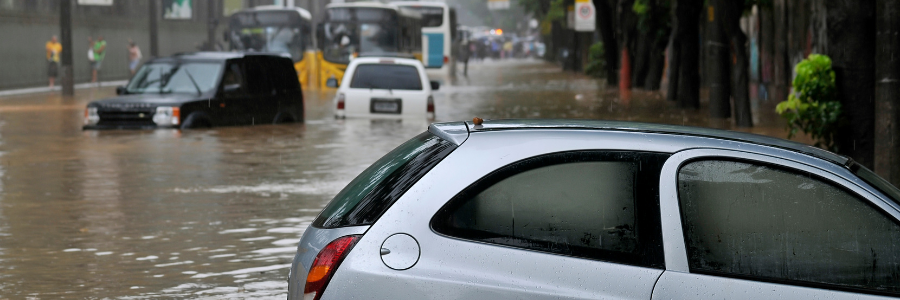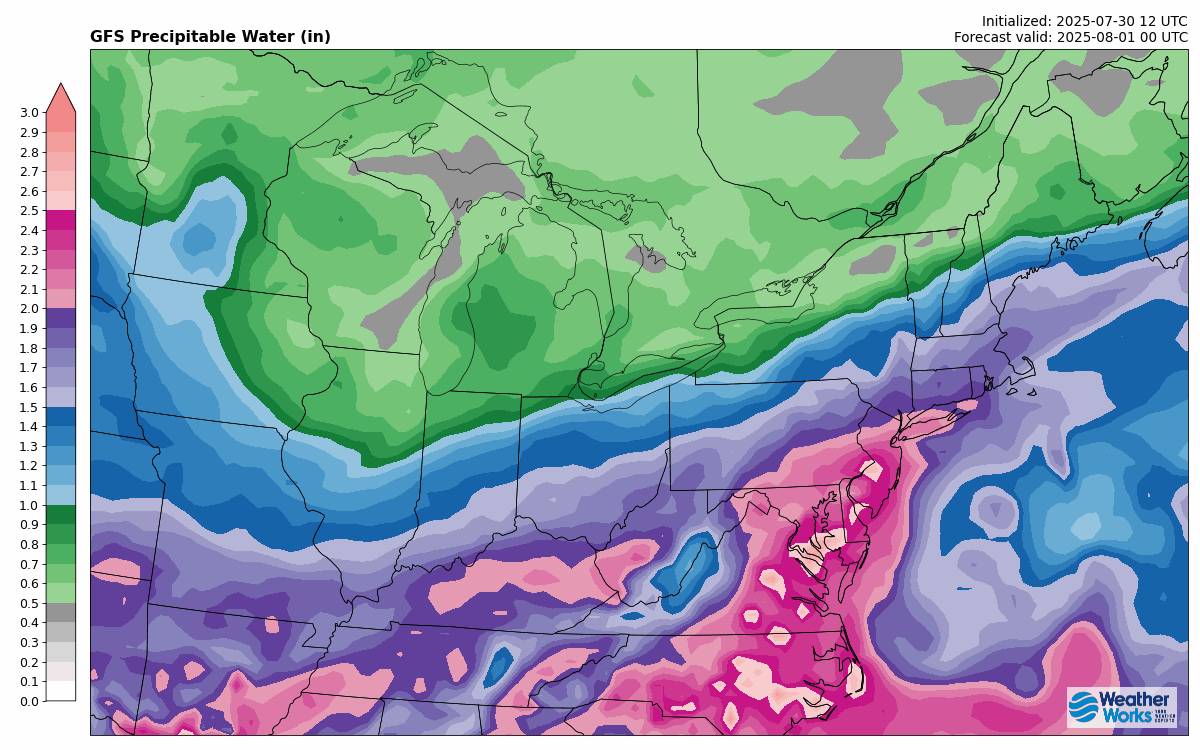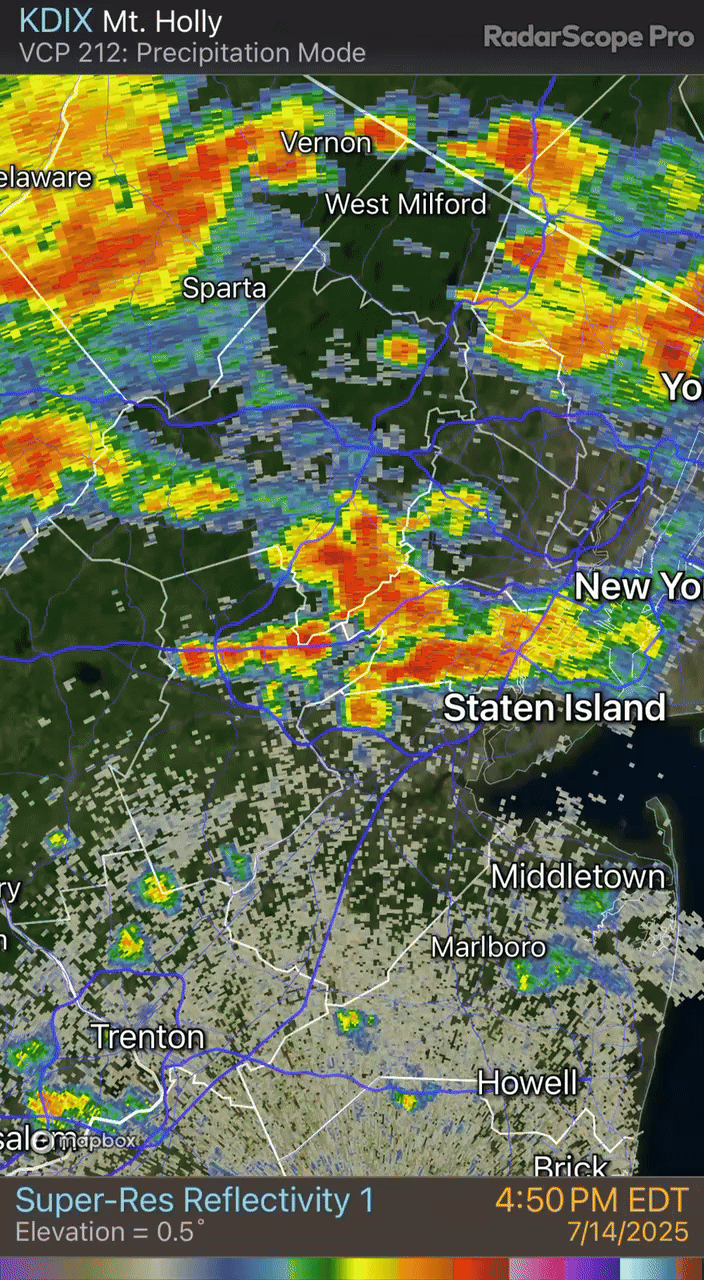

It's no surprise that 2025 has become the year of flooding events, with the National Weather Service issuing over 3,400 Flash Flood Warnings through July of this year alone. That's the most amount of warnings issued in a year since the 1980s. Some of that can be attributed to an increase in technology/warning capabilities and more advanced forecasting methods. While we won't go into details on why they are increasing, we'll be discussing why these events seem to develop "out of nowhere" and catch people off-guard, along with breaking down how they develop and what you can do to stay safe!
But first, let's take a look at what a Flash Flood is defined to be...
Per the National Weather Service, Flash Flooding occurs within 6 hours and many times within 3 hours of heavy rainfall. It's also no surprise that these events catch people off-guard, as the name itself gives it away. "Flash", in the context of flooding, is defined by Merriam-Webster's dictionary to describe a "rush" or "dash", appearing suddenly and moving with great speed.
So Flash Flooding describes an excess of rain in a short amount of time, causing water to rush in or pool up in an area, which can easily catch people off-guard. This is especially true for those in rural areas and areas across the country that lack early flood warning infrastructure. While there are numerous kinds of flooding events, we'll stick to just two main types during flash flooding:

- This type of flash flooding occurs in more urbanized and built up areas. It's also the most common form of flooding in populated city centers across the United States. It occurs when rain accumulates faster than the rate at which roads and drainage systems can drain them. This results in excess runoff and pooling of water. This becomes an issue in urban areas and especially in low lying spots where water can collect easily. Leaf and snow clogged drains in colder months can also produce poor drainage flooding, despite a lack of thunderstorms or torrential rain.
- This type of flash flooding does not require built up/urbanized areas in order for it to be problematic. Rather, heavy rain falls over a short period of time, creating excessive runoff that funnels into streams and creeks, causing sharp rises and spillage. The severity of this kind of flooding is largely tied to the initial conditions, but other factors such as soil types. Surplus rainfall leading up to the flash flooding event keeps grounds quite saturated and poor at absorbing water, as well as causing waterways to already run higher than normal.

Despite these two different types, they can actually work hand in hand, exacerbating the severity of one another. For example: Poor drainage flooding in an urbanized area can result in more runoff entering nearby streams and creeks. Likewise, stream and creek flooding in built up areas can spill over and cause a back-up of storm drains, enhancing the poor drainage flooding.
Flash flooding can occur at almost any time of the year and even be caused by non-thunderstorm factors such as dam failures and ice jams. However, they have a higher risk of developing during the spring and summer time months. But why? And how can they get to significant and even catastrophic levels? Let's take a look at some factors that go into setting up these significant flooding events:
A key component to getting torrential downpours and high rainfall rates is just how much water is in the air. Essentially, think of the atmosphere like a sponge: In high humidity and tropical airmasses, the atmosphere is able to hold much more moisture/water. We measure this ability by a variable known as "Precipitable Water"(PW). Any PW values over 1.7" are considered quite high, but in more significant flooding events, these can be upwards of 2.0"+. You can see an example of high PW below, denoted by the darker purples and pinks.
 An Example of High Precipitable Water Values (Measured in inches)
An Example of High Precipitable Water Values (Measured in inches)
To get storms/heavy rain, you not only need moisture and instability, but also a mechanism to "force" them to form. This can be in the form of surface convergence (where different wind directions near the surface converge over an area), or from an incoming storm system/frontal boundary. When these frontal boundaries slow down, they can lead to more widespread and longer lasting rainfall.
These refer to the way thunderstorms develop and move over a certain area in a flash flooding event. When winds are weak at the surface, storms tend to slow to a crawl, hence they "train" downpours over the same area. Back-building storms are similar, but instead of a storm staying over the same area, they are redeveloping or "building" back into that area, producing multiple rounds of heavy rain/downpours. They slight differences between them, but ultimately produce the same kind of flooding.
You can see an example of what back building looks like on radar below. This particular event from July 14th, 2025 produced an area of 4-7" in just a few hours and caused numerous flooded roads and water rescues.

So, we've gone over the intricacies of flash flooding; why it forms and how it forms. But what should you be aware of in order to stay ahead and be more proactive when there is a potential for flash flooding? Here are some steps to stay safe:
- Know your Risk to Flooding: If you are in a highly urbanized area or a low lying spot that is prone to flooding, you should understand the risks that come with flooding and how to protect your livelihood and property.
- Stay Aware of the Forecast: With so much information out there, it's important to find a source you trust and have a way to get up to date information and the ability to receive warnings when floods become imminent or even significant.
- Have an Emergency Kit/Plan Ready: If you're in an area that may get cut off for days after a flooding event, t's important to have a kit ready with food, water, medicine, batteries and some form of device for communication.
- Adjust your Daytime Plans: It may not be ideal, but depending on the forecast timing of rain, it may be wise to adjust plans and avoid peak flooding. When occurring during rush hour, this is highly problematic and lead to numerous water rescues when everyone is driving at the same time.
- Avoid Flooded Roads during Peak Flooding: "Turn around, and don't drown" when encountering flooded roads. If possible, avoid all travel, but If you can't...make sure to find alternate routes around flooded areas It will increase commute time, but it will keep you and your vehicle safe.
While we discussed flash flooding, as mentioned above, there are many more ways to flood, but it all depends on your risk and location. You can learn more about all the different kinds of flooding and talk to a Flood Safety Expert at AEM Here.